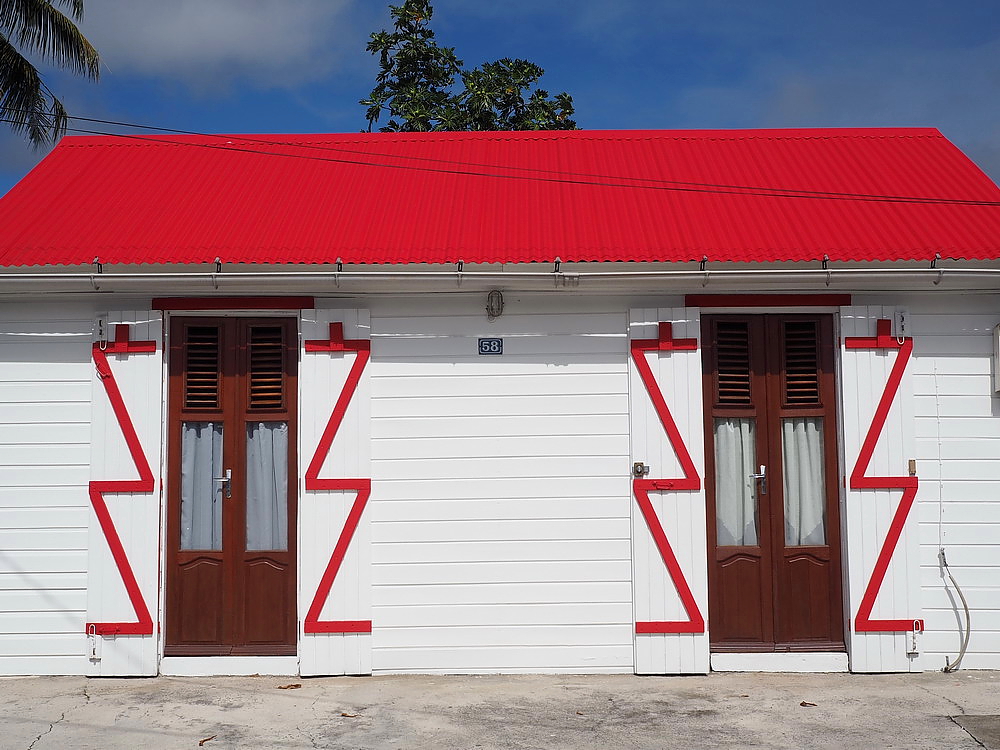Barbados, Trinidad and Grenada. The climate of the three islands is similar, yet their vibe is totally different, and so are their sights and visitors.
On Barbados, mainly older and leisurely English tourists rest in luxury beach hotels offering full service; Trinidad is the favorite spot for ornithologists, whilst Grenada mainly attracts American tourists preferring a safe and peaceful vacation.
Barbados –a new church every day
It’s always hard to answer, when asked, what my favorite country is. These three small islands are a good example of how totally subjective circumstances can affect the assessment of a place.
For me, Barbados was definitely the least enjoyable, but only my awful accommodation was to blame for that. Unfortunately I could not find a reasonably priced room on Barbados. There were either 45 dollar/day guest houses with a shared bathroom (like where I stayed) or 150 dollar/day hotel rooms – with nothing in between.

I have stayed before at places where one has to share a bathroom, this usually doesn’t cause problems. But here, eleven rooms had to share one bathroom, and the other guests weren’t too keen on cleanliness. Once I found the toilet in such an abominable condition that I had to ask to use the bathroom at a nearby hotel.
On the other hand, public transport on Barbados is great. The island can be toured by cheap and frequently running minibuses, which even take you to the airport from dawn till late evening. The ocean is amazing too, its water displaying countless shades of blue. I opted for only one pre-paid program, a sailing trip highlighted by swimming with a few turtles.


As a UNESCO world heritage collector, I could not skip Bridgetown’s (the capital) old colonial buildings. A local gentleman told me there were more than 365 churches on the island, meaning if someone wants to, they can visit a different one each day of the year. Among the spiritual buildings of the around one-hundred denominations, you can find all kinds of buildings including imposing catholic churches and tiny wooden houses.

Trinidad – birds and lots of blue
The atmosphere is very different on Trinidad. Many people come here explicitly for the colorful, merry carnival, but off season, ornithologists with huge telephoto lenses and binoculars rule the scene. Their target is the ASA Wright Nature Center, the main attraction of the island. It’s not easy to get there, as public transport only takes you to the city of Amira. From there, the taxi ride is 100 Trinidad dollars, but getting back is even more complicated. You either call another taxi from the town nearby or ask the driver taking you there to wait for you, but this is all at extra cost.
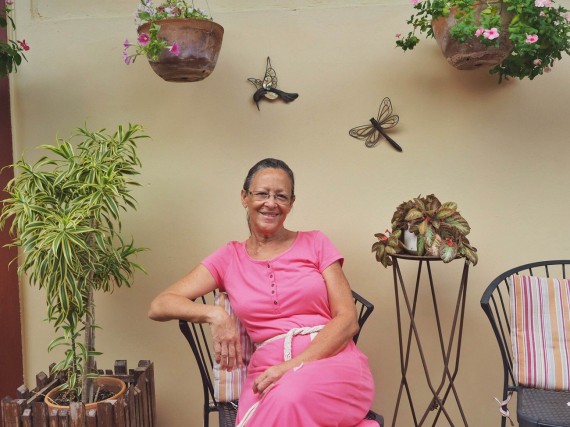
Luckily, the owner of my guesthouse used to be a geography teacher and one of his old students transports tourists. Seeing my indecisiveness, he gave him a call and with a stroke of luck, at a reasonable price, I could join the group he was taking there in the coming days. ASA Wright Nature Center is a not-for-profit organization with scientific and educational purposes. 1.5 hours long, guided walks are conducted daily at 10:30am and 1:30pm for visitors interested in the Center. But if you wish to get to know the birds more thoroughly, you may book a room to stay. During our walk we didn’t see that many birds, but plenty were flying around the Main Building, owing to the bird feeders placed there. It’s no easy task to photograph these birds as they are tiny and fast, but I managed to take a few pictures.
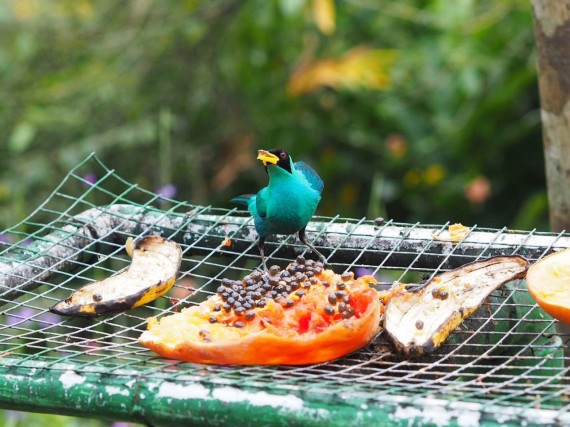
The other popular sight of the island is Maracas beach where I went with a shared taxi used by locals, which is much cheaper than the normal taxi usually used by tourists. The only problem with shared taxis is that they don’t leave from a main station; you have to know which corner to snatch them on in a specific direction.
To Maracas beach, for example, taxis left from the crossing of Prince and George streets in Port of Spain. There is no timetable, they leave when the right number of passengers has assembled. They are relatively cheap, 10 Trinidad dollars for an approximately 1 hour ride.
The beach itself is like you imagine a typical Caribbean beach: wonderful blue water, white sand and leaning palm trees. Despite the number of people – a bus full of tourists from a cruise ship had just arrived – it wasn’t crowded. Unfortunately I only found out later that sand flies are abundant in the area, their bites itching like crazy the next day. Luckily the local pharmacy had an effective ointment.

Grenada – still the island of tranquility
Of the three islands, Grenada was unequivocally the most peaceful and tranquil. The island’s tourist experts use these characteristics specifically to lure visitors, doing it so successfully that the number of visiting Americans has grown significantly.
This picture of an idyllic island was shaken to the core in January 2016, when a man fresh out of jail killed an American woman who was walking on the beach. The 39 year old assailant was sentenced to 80 years in jail, so he would never walk free, but many people demanded the reintroduction of capital punishment apropos of the case.
A few decades ago, public security was so good on Grenada that no one closed their doors. Stealing only appeared on the island with the spread of television and violent movies. Currently there are 400 convicts in prison, and only 4 of them are women.
We learnt all this from a gentleman on the street, whom we asked how we could get to the cocoa plantation on the northern part of the island on Sunday, as there’s no public transportation on Sunday. Luckily for us, the above mentioned gentleman used to be the PR manager of the local tourist authority, and for the past couple of years he is a self-employed tour guide.

He had a couple of guests for that day too, two Czech couples whom we joined for 25 dollars each. Not a bad price for an eight hour minibus ride around the island, especially as we got to know a lot of interesting trivia. For example, we saw the private island which can be rented from its French owner for 65,000 dollars per day, and where Justin Bieber celebrated his 21st birthday.
We drove through towns and villages, which still showed many signs of the devastating cyclones. We also saw a surprisingly high number of glamorous villas. When the island became independent, many foreigners who lived here fled, fearing the unstable political situation. They sold their houses really cheap, so today a few average income Grenadians, who saw the opportunity and acted on it, live in fine villas.
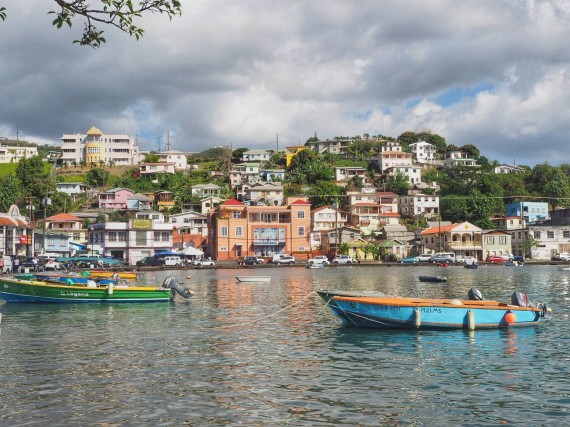
They are not happy to be independent
No one we asked was happy with independence. They used to be able to work in the UK as they wished, but nowadays this has become cumbersome. It’s interesting though, that many Grenadians retire home after working in England, because this is where they really feel at home. That’s exactly what the owner of our guest house did. Her four children are now independent and her husband had died, so she moved back at the age of 65, bought a house and sublets her two superfluous rooms to tourists.
Even though one third of the population is unemployed, you don’t see starving masses simply because one can always find something to eat in nature. The island is full of fruit trees and there’s an abundance of nourishing vegetables. Even in the most hidden villages we didn’t encounter misery, only kind, smiling locals.
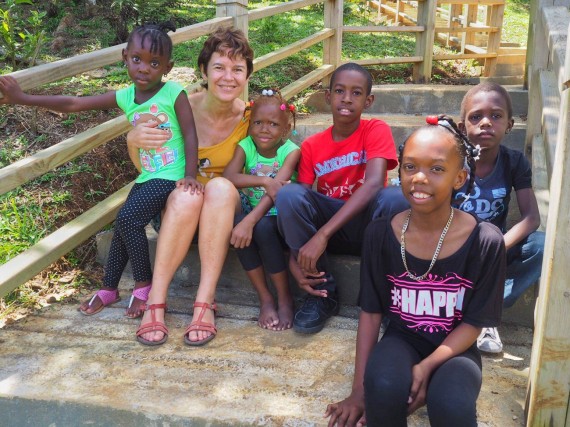
Besides tourism and agriculture, there’s an American medical university providing a living for many residents. The main produce are cocoa beans and mace, you run into these everywhere on the island. The highlight of our trip was a visit to a cocoa plantation where we could follow through the processing and of course, taste the great end product.

